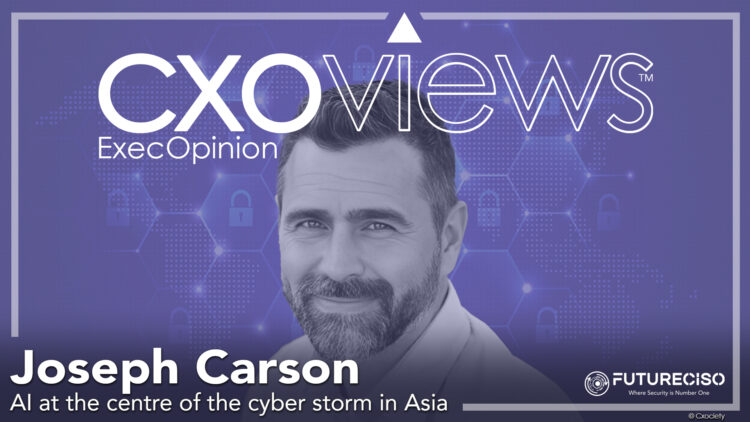The Asia-Pacific (APAC) region is facing a relentless barrage of cyberattacks. In 2024, organisations in APAC experienced an average of 1,963 cyberattacks per week, exceeding the global average of 1,876, according to the FS-ISAC. A significant factor driving this surge is the increasing sophistication of AI-driven threats.
While artificial intelligence offers immense potential for innovation and efficiency, it has also become a powerful tool in the hands of cybercriminals, demanding a proactive and adaptive approach from security teams.
AI-enhanced cyberattacks are here
Artificial intelligence is no longer just a tool for innovation; it's a weapon in the hands of cybercriminals. Joseph Carson, chief security scientist at Delinea, notes that AI is "reshaping cybercrime, making attacks faster, smarter, and harder to stop." These aren't isolated incidents; AI enables criminals to learn, adapt, and evolve their tactics in real-time.
One of the most concerning developments is the use of AI to steal identities, a preferred method for gaining initial access to systems. Traditional security measures like passwords and multi-factor authentication (MFA) are increasingly insufficient against these sophisticated attacks. Defences need to be dynamic, continuously adapting to shifting risks.
Identify as the new perimeter
Given the increasing focus on identity theft, organisations must prioritise identity security. Carson advises, "Attackers increasingly target identities to gain access, and organisations must prioritise identity security." This requires a shift in mindset towards a zero trust strategy.
A zero Trust approach assumes that no identity or device is automatically trustworthy. Every access request must be verified, regardless of whether it originates from inside or outside the network. Identity Threat Detection and Response (ITDR) plays a critical role, enabling security teams to monitor behaviours, detect anomalies, and respond to threats instantly.
“AI-powered risk scoring and auditing provide an extra layer of protection, allowing organisations to spot unusual activity and block or challenge suspicious access before it escalates.” Joseph Carson
According to Delinea’s Identity Security Report, 78% of organisations plan to increase spending on identity security this year, prioritising ITDR, Privileged Access Management (PAM), and cloud identity governance to stay ahead of changing threats.
Securing non-human identities
As AI and automation become more prevalent, non-human identities, such as bots, AI models, and DevOps tools, are outnumbering human users in many organisations. These machine identities are often overlooked in security strategies, making them vulnerable to misuse.
Carson warns that attackers "actively target non-human identities, also known as machine identities, to move laterally through systems undetected." Protecting these identities requires applying the same zero trust principles used for human users. This includes enforcing least privilege access, continuously verifying credentials, and securing sensitive machine-to-machine communications.
Intelligent authorisation for AI systems
AI-driven systems are now making autonomous decisions that impact business operations. However, many organisations lack visibility and control over their AI and automation workflows. Without strict security measures, AI models and automation tools can have excessive privileges and access, creating a significant security blind spot.
The key to securing AI systems is intelligent authorisation.

"Organisations must integrate PAM and Just-in-Time access controls into AI workflows, ensuring that AI-driven processes only access what they need, when they need it, with the right level of oversight." Joseph Carson
AI agents and automation tools must also adhere to strict identity security policies to prevent privilege creep and secure machine-to-machine interactions.
Behavioural monitoring and real-time alerts
Attackers are increasingly using deepfakes, AI-generated voice impersonation, and synthetic identity fraud to mimic trusted users. Traditional security measures often struggle to detect these evolving threats. Continuous behavioural monitoring and real-time alerts provide a crucial layer of defence by identifying unusual activity that could indicate an attack.
Monitoring deviations in login locations, session durations, or access requests allows organisations to flag suspicious behaviour and trigger additional verification before damage is done.
A critical investment for APAC businesses
APAC businesses face unique vulnerabilities, including credential theft, insider risks, and gaps in multi-cloud security. With nearly 90% deploying significant workloads across multiple public clouds, managing identity across fragmented systems is a major challenge. Attackers are exploiting these weaknesses, targeting privileged credentials to infiltrate critical infrastructure.
Privileged Access Management (PAM) helps enforce least privilege, secure DevOps workflows, and detect identity threats before they escalate and move laterally across the network. Given the tightening cybersecurity regulations in the region, businesses can no longer afford to overlook privileged identity security.
Collaboration with cyber insurance providers
Cyber insurers are raising their standards, requiring organisations to implement strong identity security controls like PAM, MFA, and continuous identity monitoring to qualify for coverage.
In Singapore, the Personal Data Protection Act enforces strict data protection requirements, leading insurers to insist on stronger identity security controls to mitigate the risk of breaches.
Carson notes that businesses that "proactively strengthen identity security not only reduce their risk exposure but also improve insurability and secure better policy terms."
“By working closely with insurers, security teams can align their defences with evolving risk models, prioritising investments in Identity Threat Detection and Response and adaptive access controls.” Joseph Carson
Key takeaways for APAC CISOs in 2025
- Embrace a zero trust mindset: Verify every access request, regardless of origin.
- Prioritise identity security: Focus on protecting both human and non-human identities.
- Implement ITDR: Monitor behaviours, detect anomalies, and respond to threats instantly.
- Secure AI systems: Enforce intelligent authorisation and least privilege access for AI-driven processes.
- Invest in PAM: Manage and protect privileged credentials to prevent lateral movement.
- Collaborate with insurers: Align security measures with evolving risk models and regulatory requirements.
- Continuous behavioural monitoring: Implement continuous monitoring and real-time alerts to detect unusual activity.
By adopting these strategies, CISOs and security teams in APAC can build robust defences against AI-powered cyberattacks and protect their organisations in the evolving threat landscape of 2025.



